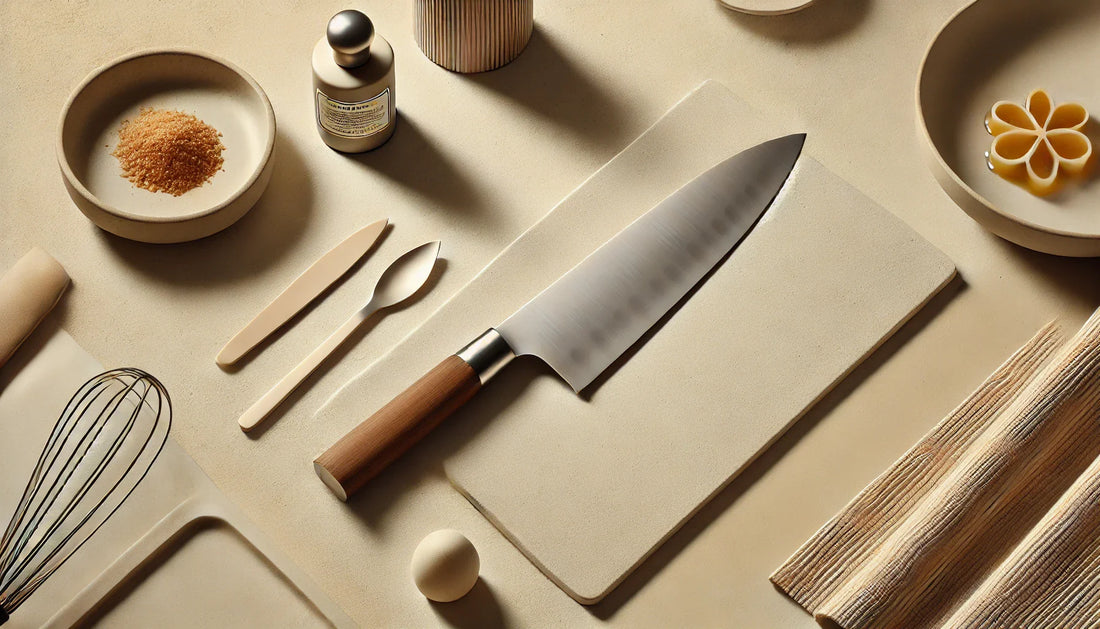
Common Knife Mistakes to Avoid: Expert Tips for Cooking Lovers
Share
Using kitchen knives might seem straightforward, but even experienced home chefs can make mistakes that cause their blades to become dull, which could lead to injuries or slow down their cooking process. Here are the common knife mistakes that you should avoid, which will help you make the most out of your kitchen knives, including the SEKKIN Chef's Knife.
1. Using the Wrong Knife for the Job
One of the most common mistakes home chefs make is using the wrong knife for a particular task. A chef’s knife, like the SEKKIN Signature Chef’s Knife, is incredibly versatile, except for some rare tasks. For example, using a chef's knife to cut through bones or frozen food can damage the blade. Instead, use a cleaver for tough cuts or a serrated knife for slicing through bread. Here is the SEKKIN guide to using the right knife for the right kitchen task.
2. Improper Knife Maintenance
Many home chefs don't realize the importance of proper knife maintenance, leading to dull blades and a frustrating cooking experience. Regularly honing and sharpening your knives is essential to maintain their edge. Honing your knife before or after each use keeps the blade aligned, while sharpening once every few months restores its sharpness.
3. Incorrect Grip and Cutting Technique
Holding your knife incorrectly not only makes cutting harder but also increases your risk of injury. Gripping the handle too far back or putting your index finger on top of the blade are common mistakes. Instead, grip the handle close to the blade with your thumb and index finger pinching the sides of the blade for better control and precision. Here is a guide to master the knife skills basics.
4. Cutting on the Wrong Surface
Cutting on the wrong surfaces, such as glass, marble or ceramic, can quickly dull your knife. Always use a wooden or plastic cutting board to protect your blades and ensure they stay sharp longer. However, using a sharp knife on a plastic cutting board can lead to microplastics ending up in your food, so stick to wooden cutting boards. The SEKKIN Chef's Knife is crafted to maintain its edge longer, but it still needs the right cutting surface to stay in prime condition.
5. Not Storing Knives Properly
Storing knives loosely in a drawer or without protection is a recipe for dull blades and potential injuries. To maintain the sharpness of your SEKKIN Chef’s Knife and all your other knives, store them in a knife block, on a magnetic strip, or in a protective sheath.
6. Using a Dull Knife
A dull knife is not only inefficient but also much more dangerous than a sharp one. When a knife is dull, you need to use more force to cut through food, increasing the likelihood of slipping and injuring yourself. Make sure to sharpen your knives regularly to keep it in top condition.
7. Washing Knives Incorrectly
Avoid putting your knives in the dishwasher, especially high quality knives such as the SEKKIN Chef's Knife, as the high heat and harsh detergents can damage the blade and handle. Instead, wash your knives by hand with warm, soapy water and dry them immediately to prevent rust and corrosion.
Avoiding these common knife mistakes will help you get the most out of your kitchen knives, ensuring they remain sharp, safe and effective tools in your kitchen. By using the SEKKIN Chef’s Knife properly and taking care of it as recommended, you'll not only enhance your cooking experience but also extend the life of your knife.
